
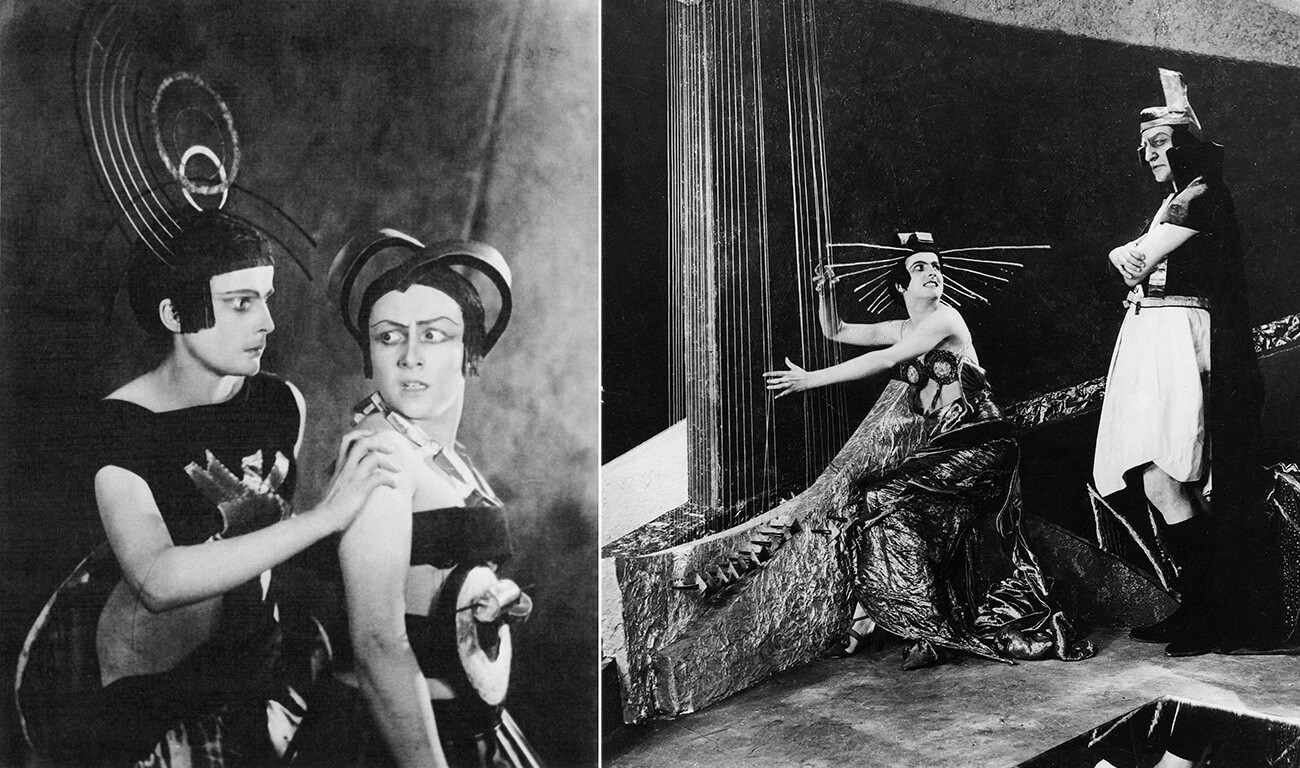
This silent sci-fi movie is based on the novel by Aleksei Tolstoy. A Soviet engineer named Los is building a spaceship he calls the ‘Interplanetonef’, which he plans to use to travel to Mars. Meanwhile, not all is well on the Red Planet: as Queen Aelita watching the events taking place on Earth, her population lives in slave-like conditions. Having completed their interstellar journey, our Soviet protagonists instigate a rebellion in the working-class neighborhoods. The queen is unhappy with this, and orders the Martian proletariat to be shot.
‘Aelita’ iwas one of the first sci-fi movies about space travel. It also contains beautiful costumes by artists Aleksandra Ekster and Nadezhda Lamanova: the Martians resemble Roman senators and legionnaires, while Aelita herself looks like a fashionista in constructivist outfits.
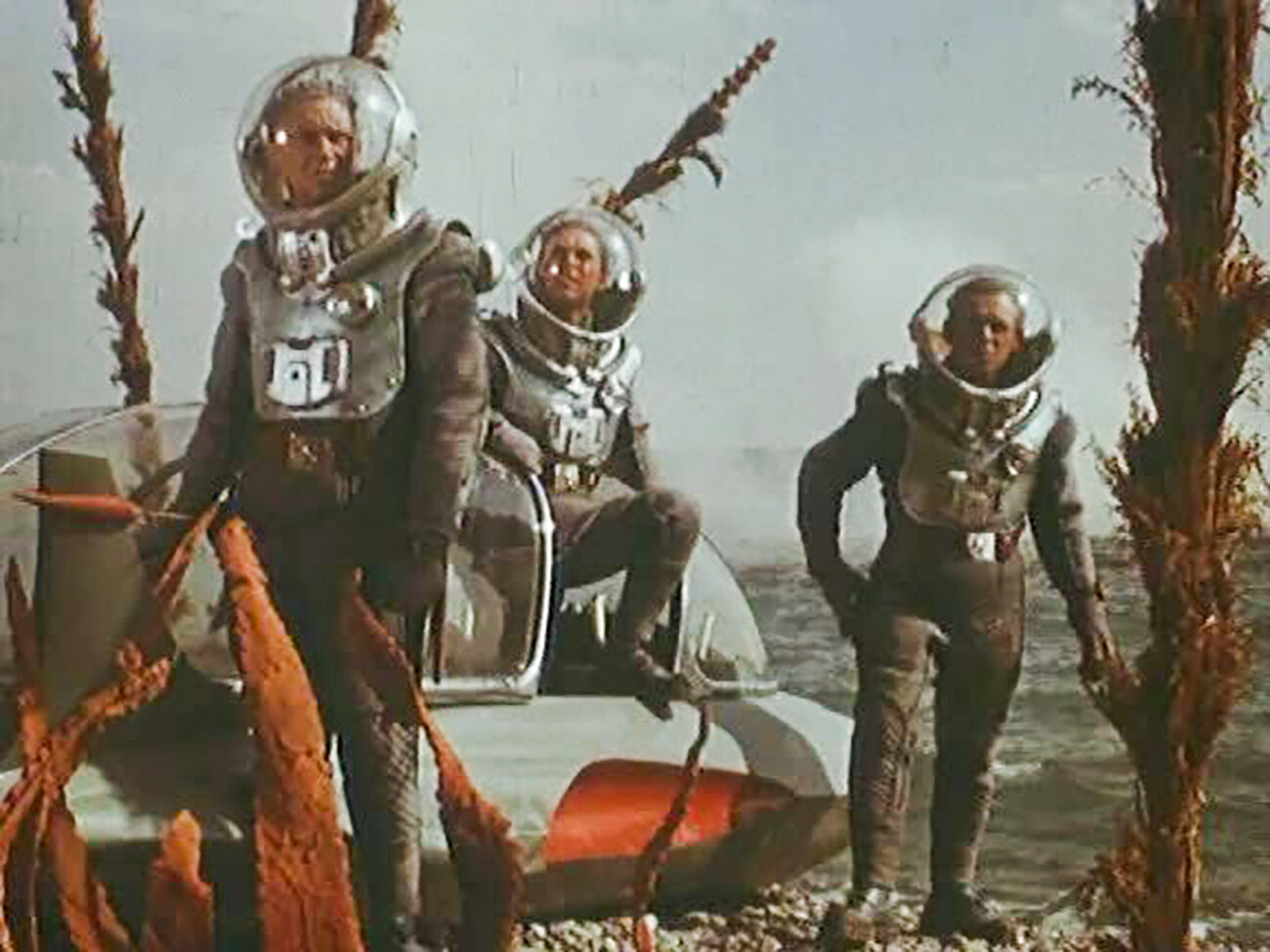
A Soviet-American expedition on three space ships sets off for Venus. The cosmonauts explore the planet, meet local lizard-like creatures and even make it down to the bottom of the local ocean. There, they discover evidence of that a civilization once existed there. It is only after they leave the planet that a white-robed Venusian appears in a lake’s reflection and waves after them.
Acclaimed directors Stanley Kubrick, George Lucas, James Cameron, Steven Spielberg and Ridley Scott were all inspired by Pavel Klushantzev’s movie. In 1965, Hollywood re-edited ‘Planeta Bur’, added new scenes and released it as ‘Voyage to the Prehistoric Planet’.
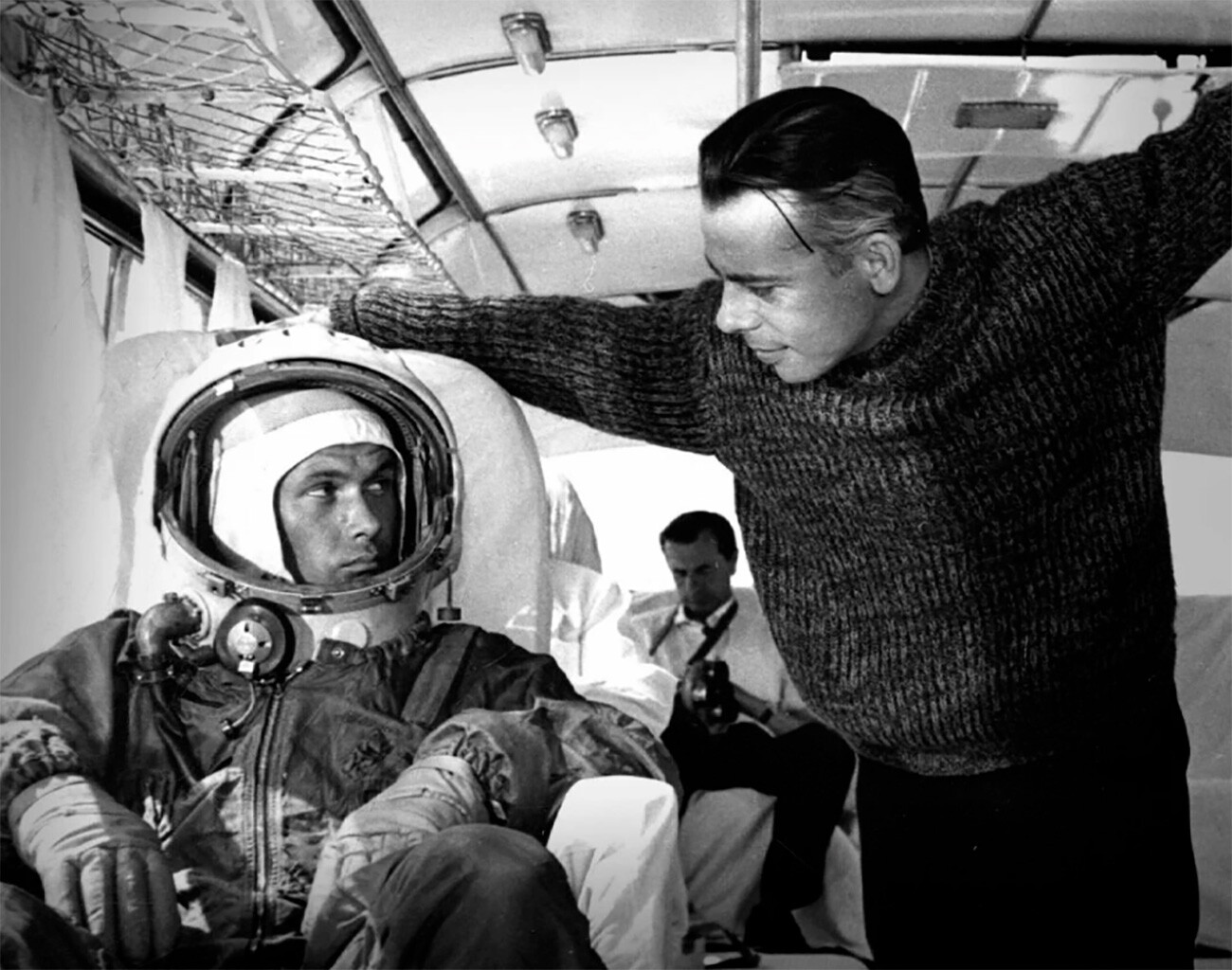
There are no ‘little green men’ or humanoids from distant planets in this movie – only a wall that appeared out of nowhere somewhere in the remote taiga. For several months, scientists have been struggling with its riddle, not understanding whether they’re dealing with a natural phenomenon or alien intelligence. People who gaze at the wall have visions from the past – but who broadcasts them? Could aliens be studying the Earth’s inhabitants in this way?
‘The Mysterious Wall’ is similar to Tarkovsky’s ‘Solaris’ (1972) – with its intelligent ocean, ‘Stalker’ (1979) – with its ‘zone’ and even Denis Villeneuve’s ‘Arrival’ (2016), about the search for a common language with aliens. The message in ‘The Mysterious Wall’ believes in finding that understanding, but goes about it without any special effects, except for smoke and swirling clouds. However, the black and white film still manages to make an impression: man has already traveled to space, so why not believe that intelligent life exists somewhere out there?

One of the most iconic movies about an encounter with alien intelligence. The planet Solaris has been studied for a long time, but humanity is no closer to understanding it. Scientists living aboard an orbital station are exhausted: they are visited by people from their past, whom they associate with painful memories. Trying to study the ocean, they don’t notice that it’s trying to study them as well.
Andrei Tarkovsky’s masterpiece received the Cannes Grand Prix in 1972. And, thanks to music by Eduard Artemyev, it seems that the Solaris Ocean is indeed intelligent.

This is a comedy about aliens, who end up in the Russian science city of Akademgorodok on New Year’s Eve. The merry scientists and inventors, all dressed up in carnival clothes, mistake four aliens in silver suits for their own coworkers. Together with the earthlings, the aliens learn to dance, experience happiness, fall in love – basically, behave like humans.
There are no distant planets in this movie, although, there is, of course, a flying saucer. It is also, however, a tale of mutual understanding and the belief in the existence of humanity somewhere out there.

The inhabitants of planet Orayna rescue humans who crash-landed on their planet. They’ve long searched for a brotherly intelligence in the universe and it was time to reveal themselves. Among the survivors is Dr. Martin Ivens, who is working on an immortality potion. Having learned that this alien race live to 150-200 years and even longer, he asks them for help in his research. However, Orayna’s inhabitants are in no hurry to reveal the secret and are suspicious of the Earthlings’ intentions to use it wisely. They believe that the earthlings’ desire for violence is stronger than morality, they refuse contact.
The main role in this sad, philosophical tale of solitude in the universe was played by Sergei Bondarchuk, who directed ‘War and Piece’ (1965) and ‘Fate of a Man’ (1959).
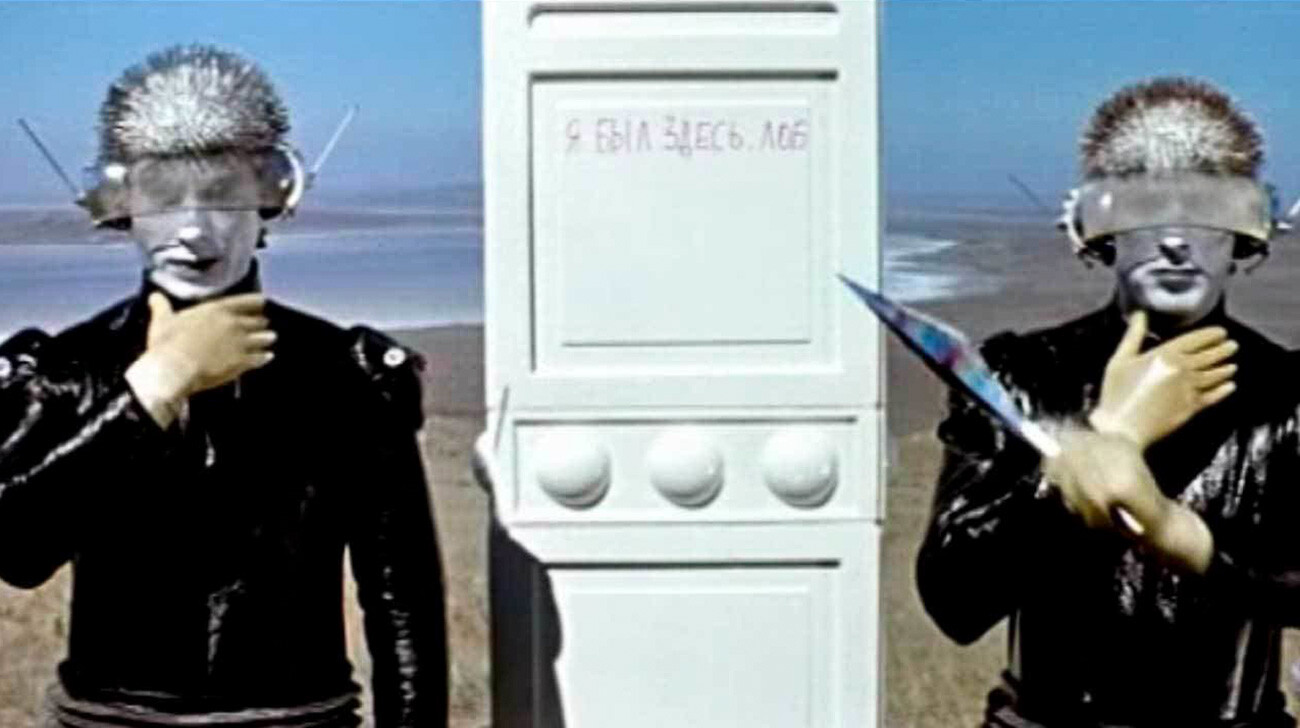
A group of teens sets off on a space journey to Alpha Cassiopeia, which will take them 26 Earth years. Having landed on planet Variana, they immediately encounter humanoid beings, who isolate the earthlings in a quarantine chamber, in order to make them “happy”. It turns out that, for many years, the planet has been ruled by robots, who believe that feelings and emotions make humans flawed. Deprived of basic qualities, such as love and compassion, the local population began to die out. The “rebellious” grow ever fewer in number, as the robots lure them out and make them undergo the “happiness” procedure. This leads the survivors to send a distress signal to Earth.
The story isn’t the only thing that’s interesting about ‘Teens in the Universe’, with the visual design also being a standout part: costume designs resemble a Paco Rabanne collection!
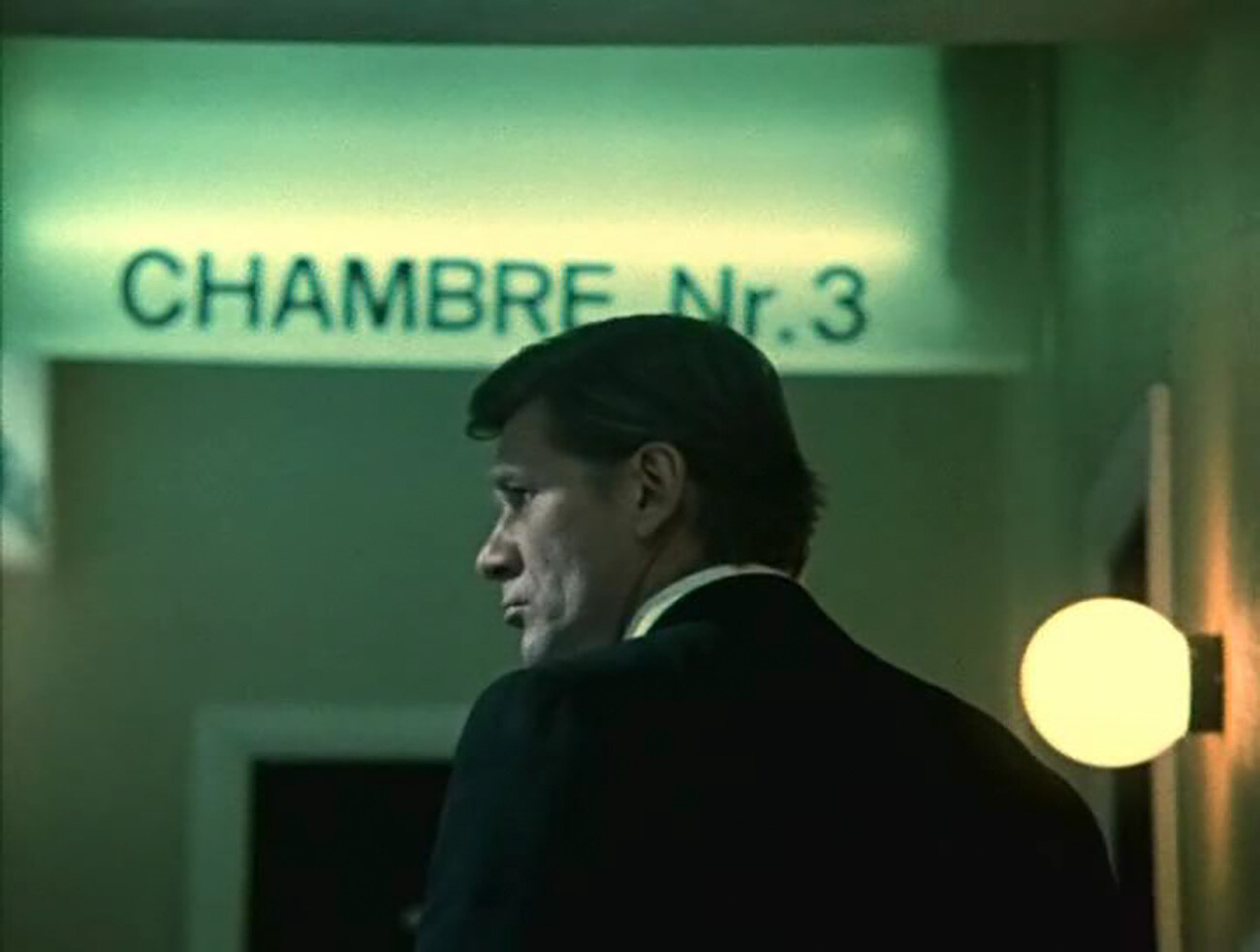
This atmospheric thriller is the kind that pretends to be a murder story. Having received an anonymous phone call, police inspector Glebski sets off for the Dead Mountaineer’s Hotel. However, everything is well – except the guests, who are a bit strange. An avalanche has forced everyone to remain cooped up at the hotel and that’s when the corpse appeares. Glebski soon discovers that the hotel is not full of ordinary ski lovers, but aliens and their robot servants.
The movie is based on the work of, perhaps, the most famous sci-fi writers in Soviet history – Arkady and Boris Strugatsky. The detective story quickly turns into a film noir about moral choices.
By the way, costume design here is the work of Slava Zaytsev, a.k.a. the ‘Red Dior’.

The story revolves around a female alien named Niya, a clone from the dting planet Dessa. She is the only survivor from a spaceship discovered by ‘Pushkin’ – an Earth space vessel. Niya remembers almost nothing about her identity or origins, but, from time to time, exhibits the ability to teleport and even telekinesis. It turns out that her home planet is dying due to an environmental disaster, with the few survivors becoming sick and hiding underground. Turanchoks, the planet’s business tycoon, makes money selling clean water and gas masks and doesn’t want to change anything.
The movie is an excellent example of Soviet science fiction – an apocalyptic cautionary tale that that still looks frightening today. The visuals are complimented by the cosmic music by Aleksei Rybnikov.
Dear readers,
Our website and social media accounts are under threat of being restricted or banned, due to the current circumstances. So, to keep up with our latest content, simply do the following:
If using any of Russia Beyond's content, partly or in full, always provide an active hyperlink to the original material.
Subscribe
to our newsletter!
Get the week's best stories straight to your inbox